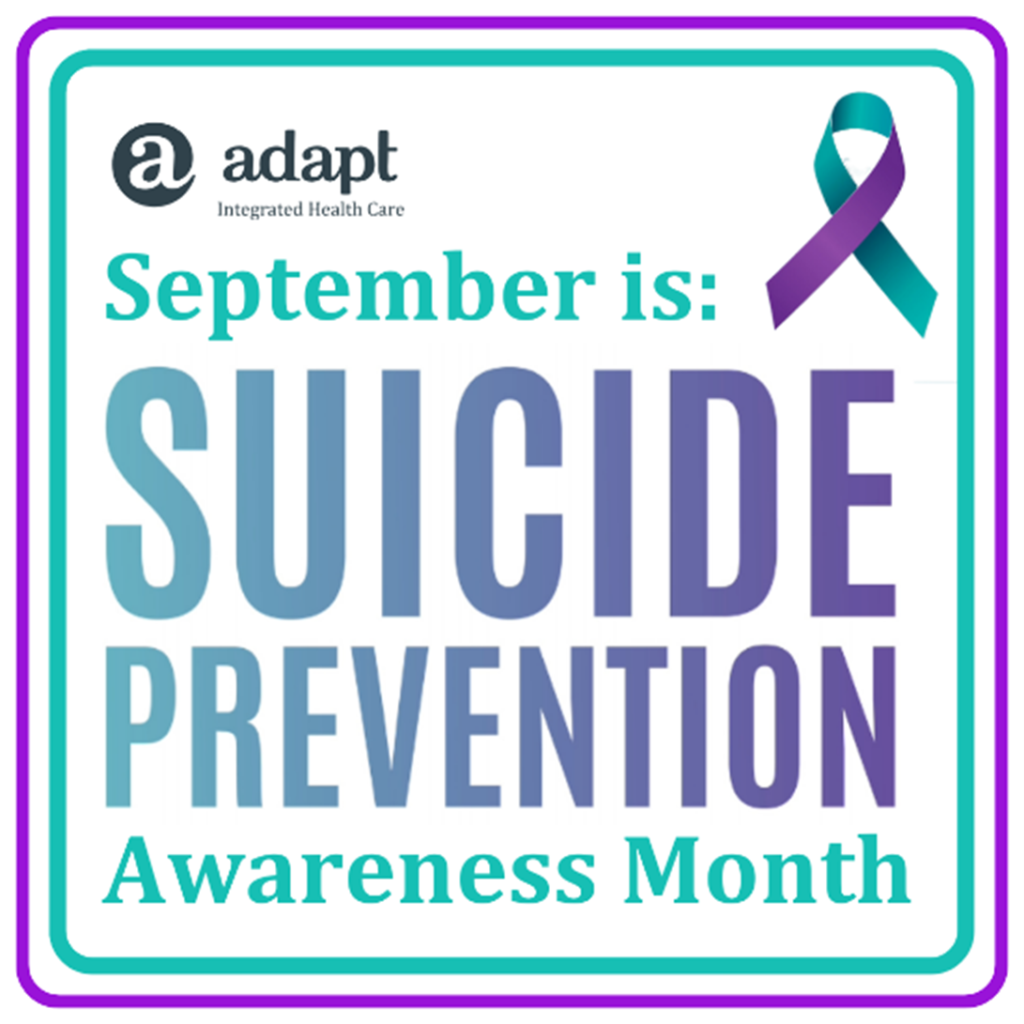
When you think of your favorite senior citizen, what comes to mind? Often, it’s how kind and supportive they can be in times of trouble. Ironically, older adults may hesitate to talk about their own struggles, feelings of sadness, or depression.
September is Suicide Prevention and Awareness Month. The U.S. Centers for Disease Control reports suicide rates for older adults in Oregon have risen in recent years. Many may be surprised to learn that adults over the age of 75 complete suicide more than any other age group.
As the age of the average Oregonian continues to advance, so does the need to be aware of what leads to suicidal inclinations in mature adults, and the hopeful ways to help protect them from self-harm.
Depression is the leading cause of death by suicide worldwide. Depression should not be considered just a normal part of growing older, and it responds well to clinical treatment – at any age. However, the majority of individuals (54%) who take their own lives do not have a diagnosed mental health condition. Rather, major changes in life circumstances can temporarily upend anyone’s stability and overwhelm one’s capacity to cope.
Older adults may be struggling to adjust to grief, financial challenges, chronic pain, major illness, disability, or a sudden loss of independence. Unhappiness and loneliness may intensify after the loss of an important relationship, or a gradual distancing from family and friends. At times, these feelings may become acute or seem unbearable.
All genders contribute to older adults’ rates of fatal self-harm. When women complete suicide, it’s most frequently between the ages of 45-64. In those decades, women are most likely to divorce (at an average age of 44), may be adjusting to a reduced household size, or experiencing biological change.
When women leave the workforce, at an average age of 62, their suicide rates decline. But for men – who retire at an average age of 65 – the risks unfortunately begin to rise, and peak at age 85 and above.
Rural residents of Oregon are especially vulnerable. Not only does our state rank in the top-quarter of national suicide completion rates, but the average farmer or rancher (who is 59 years old, and male) may experience added risk, as agricultural occupations rank 4th in suicide prevalence.
Making a living off the land can come with related health conditions, hearing loss, relative isolation, and stressors from the unpredictable nature of environmental, labor, and market conditions. Access to firearms is also common in rural settings. All of these factors can contribute to older, rural Oregonians’ risk.
Encouragingly, any one of us can be a suicide-prevention guardian, by paying attention to potential warning signs, taking positive action, and helping each other connect to resources.
Several of the warning signs outlined by the Suicide Prevention Resource Center include verbal cues (talking about or threatening suicide), increased alcohol or drug use, changes in behavior or sleep patterns, withdrawal, speaking about being a burden, making a will, or giving away prized possessions.
If you suspect someone may be feeling suicidal, experts advise that you ‘lean in’ – not ‘out’ – and ask them about it. Talking about suicidal thoughts may provide some relief, according to the National Association for Mental Illness. Offering to help them arrange and attend an appointment for professional help can be vital.
Calling the 988 Suicide and Crisis Lifeline immediately connects a suicidal person to help. Mobile Crisis counselors may be able to assist with developing a concrete safety plan. Safety plans identify coping strategies and sources of support, and in some cases may include voluntary, temporary reduction of access to lethal means, like firearms.
As the percentage of adults who live alone has doubled in the U.S. since 1940, many seniors would clearly benefit from having someone to talk to. There are several call-lines specific to their needs.
The 24-hour Friendship Line (1-800-971-0016) is staffed by amicable volunteers, available to speak with adults aged 60+ or anyone living with a disability. The Senior Loneliness Line (1-800-282-7035) accepts calls from Oregon residents 55 and over, and offers outgoing calls to those who would welcome a friendly check-in.
Simply placing a post-it note with a call-line number on a friend’s refrigerator door could help them manage a future crisis of isolation.
Furthermore, encouraging older adults to engage in shared social or physical activities is a good form of ‘connection planning,’ to help prevent disconnectedness in later years. Examples include involvement with senior centers, churches, hobby clubs, or exercise classes. A handy guide to senior centers and senior-specific services throughout Oregon is available at carefororegon.org. It’s valuable to realize that suicidal thoughts are part of the human experience, and not a reason for shame or stigma. About 10 million adults in our nation, from every walk of life, give serious thought to suicide each year. Suicidal actions, however, can be mitigated by providing constant support to those around us. Regularly remind your loved ones that they are not alone. Doing so might just save a life.
Sources:
- How to Ask Someone About Suicide. (2019, September 06). National Association for Mental Illness.
- Miller, C and Rudolphi, J. (2022, June 7). Characteristics of Suicide Among Farmers and Ranchers. American Journal of Industrial Medicine.
- Older Oregon Adult Suicide Prevention Plan. (2006) ODHS.
- Oregon Senior Centers. (2020) Oregon Care Planning Council.
- Suicide Data and Statistics. (2023) Centers for Disease Control and Prevention.
- Suicide in Oregon. (2013) Oregon Health Authority. Warning Signs for Suicide. Suicide Prevention Resource Center.
- Warning Signs for Suicide. Suicide Prevention Resource Center.